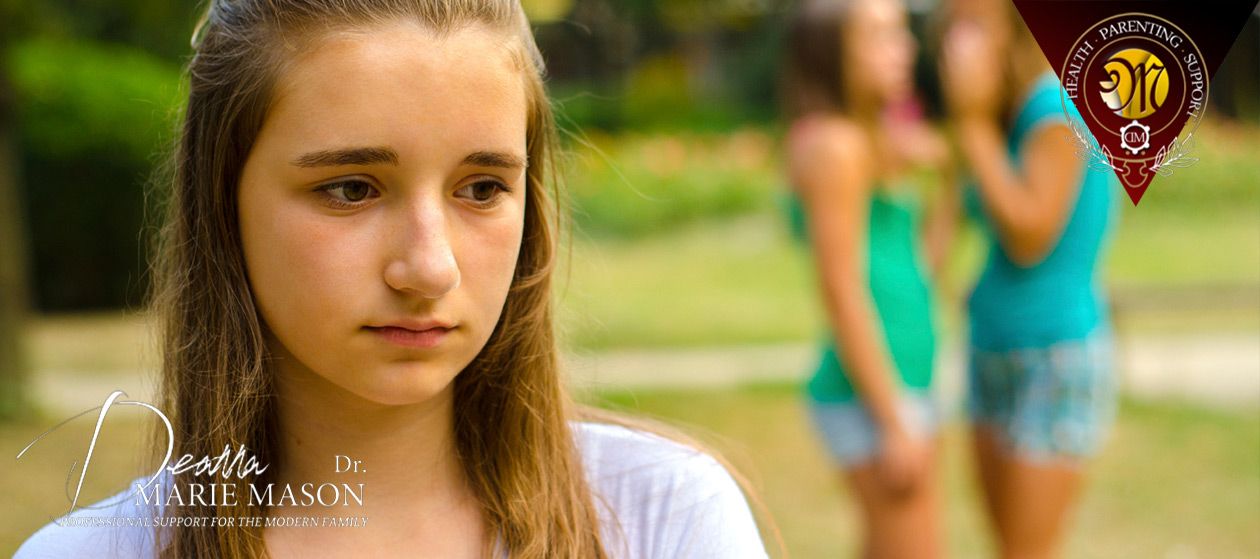By understand common developmental themes related to sexuality and reproduction throughout adolescence, parents will be able to adjust their message on sexual health to best meet the needs of their child.
Studies confirm that the majority of unintentional pregnancies occur during adolescence. Therefore, it is prudent to understand the developmental mindset of teens to prepare them to manage the sexual feelings that are natural to the biological processes happening within their bodies, the social situations that can influence their decision making ability, and their cognitive ability to understand their decisions and anticipate the consequences of their actions.
Pre-adolescents
An unintended pregnancy can happen at any age including girls as young as 11 years old. Many parents think that late childhood or pre-adolescence is too early to talk about sexual health and reproduction. However, pre-adolescent girls can become pregnant. The most common reasons that pre-teens become pregnant are because they do not understand the changes that are occurring in their bodies that may cause them to become pregnant, they are being sexually abused by older adolescents or adults, or they have not yet developed the cognitive ability of abstract thought to understand that her behavior is putting her at risk of pregnancy.
Early adolescents
Adolescents between 13-15 years are in the depths of egocentrism of adolescents and live in the moment while not focusing on the repercussions or consequences of their decisions beyond the here and now. Additionally, early and middle teens are at risk of being sexually manipulated if they are trying to befriend and hang out with older adolescents or young adults in order to validate their presence in the group.
Middle and late adolescents
Older adolescents, ages 16 years and up, may have irregular use of their preferred birth control methods. Or, they may find themselves engaging in risky behaviors related to drug and alcohol use that can impair their decisions making skills and the use of condoms. Additionally, based on these high-risk behaviors, older teens may at risk for sexual assault.
Teens with the lowest risk of unintentional pregnancy have open, trusting relationships with one or more adults, know where to seek assistance when needed, are in safe environments with no abuse, are not engaging in high-risk behaviors such as drugs or alcohol, and arrange their lives within a family structure that allows independence with limits for protection and guidance. This creates a situation where the teens are aware of their abilities, limits, have a clear sense of themselves including where they fit into their family and society while understanding their rights and obligations in relation to both.
The best age to talk to teens about birth control
More important than talking about birth control or abstinence at a certain age, parents can help their children avoid unintentional pregnancy by discussing the dignity of the human body from the earliest ages. Beginning in infancy, teaching children to use the correct names to describe their genitals can remove negative stigma related to sexuality, empower children to own their bodies from a young age, and help reduce the risk of sexual abuse by avoiding making the body a play object or toy. Additionally, teaching children that their bodies are private and should only been seen by parents or health care providers can make them aware of their importance in the world and give them tools to begin making decision about what is right and wrong for their bodies.
As children grow up, continuing this education of respecting the body can continue by discussing overt sexuality or hyper-sexuality that is commercially seen in society. Speaking to children, in age appropriate language and themes, about explicit messages emanating from music videos, commercials, television programming, and Internet memes/videos/social media around sex and sexuality can help children begin to learn that those messages may not match the family’s values. Parents can use these images to both educate and inform both boys and girls. Little by little, children learn to question the images they see, seek advice and counsel from parents when they see something they know is not matching with the family’s values, and, over time, learn to evaluate independently explicit sexual images.
Finally, during adolescence when teens have more independence, parents need to speak directly to teens about risks of premature sexual behavior and what choices they can make if they do decide to engage in sexual acts to reduce the risks to their physical, mental, social, and emotional health. It has been shown that higher-quality relationships between adolescents and their parents, especially between mothers and daughters, may help to protect against early sexual initiation, delay sexual initiation and create healthier sexual practices (e.g. condom use, contraception, seeking medical treatment for infection, etc.).
Parents can only provide their children the tools to make good choices. Children must find reasons to be motivated to use the tools they learn. By communicating and educating clearly on family values, expectations, and helping teens understand the potential consequences of their actions, parents prepare their children to think before they act and prevent an unwanted pregnancy.
How to start taking to teens about avoiding unwanted pregnancy
Many parent feel embarrassed or uncomfortable talking to their children about sexual themes. They may feel they are starting too early or that their child knows what the family expectations are. However, in reality, pre-adolescents’ and some early adolescents’ cognitive development does not allow them to extrapolate information they learn at home and apply it new situations. They learn best by direct instruction with examples. Therefore, if parents want to assure that their pre-teen understands the family’s expectations about sexual activities, it is best to speak directly and explicitly to the teen so they understand clearly what is expected.
To illustrate this point, when groups of boys and girls begin to go to the movies together as a group, around age 12-13, parents should speak to their sons and daughters and tell them what limits match the family’s norms. An example could be, “it’s OK to hold hands right now, however there is plenty of time to do other things. Try speaking and getting to know your friends to really make sure you like him or her before kissing.” Or, “Remember that even if a boy tells you he won’t tell anyone about what you’ve done together, most probably he will tell everyone or share it on social media. Be sure you don’t do anything that you wouldn’t want everyone to know about.”
As teens get older and go out on individual dates, speaking honestly about potential situations, how to get out of them, and what to do if they find themself in an unsafe situation can give them the tools to make better decisions. For example, “You know our family rule is no alcohol. However, if you find yourself in a situation where you are scared or being pressure to do something you don’t want to do, know that you can call me at any hour and I will come and get you immediately. I won’t say anything to embarrass you or discipline you at that moment. I love you and just want you safe. Later, when you are safely at home, we can discuss how to make better decisions in the future.”
Success depends on how the message is sent
Parents should begin these conversations way earlier than they think. Respect for the child’s own body and the bodies of others should be a continuing conversation that is weaved into other elements of their education. Sexuality should not be a taboo subject; sexuality is the essence of each person and should be discussed and presented in age appropriate ways throughout childhood and adolescence. Avoiding secrecy in relation to sex can help children reach out to trusted adults if questions, needs or issues arise.
If parents choose to educate about the value of the human body and teach their children about being respectful of their own bodies, and the bodies of others, it is easy to open the conversation about sexuality, sexual activity, and birth control. These discussions should be introduced before menstruation or puberty in an educational way related to the body’s ability to have babies, to feel sexual urges towards others, and physical changes. Parents can start these conversations with a factual statement such as,
“Once you begin your period/go through puberty, you will have the ability to have a baby and your body will have feelings that seem strange right now, but later will feel natural. Luckily we live in a time when women and men can choose when they want to have babies so we can study and have professions. When the time comes, we will talk about what options there are so you can choose when, or if, you want babies.”
Later, when older teens are going out regularly or dating, parents can speak to about protection from both sexually transmitted diseases and pregnancy.
Teens are more receptive to parents who open conversations to share information and who listen to what their teens say. Parents who begin conversations in an attempt to control their teen’s activities or interrogate them about what they may or may not be doing will be ineffective. Talking in a matter-of-fact way can be freeing for teens to actively participate in the conversation. The key is mutual respect, trust, time, and privacy to explore the teen’s feelings and ideas without judgment. Parents should strive to be a safe place for their teen to talk.
Being a safe place for teens comes down to nuances. For example, asking, “How often are you having sex?” rather than “Are you having sex?” The first option presupposes that the child is sexually active so he or she can just state the frequency or say “I’m not.” The second question presupposes that the child is not having sex and so the child is faced with the choice of perpetuating that presupposition or admitting they are sexually active. The first option is easier for the child and gives an open and safe place to talk. The second demands a confession and puts barriers in place between the parent and child.
Understanding adolescent development is key to communicating effectively
Adolescence is a time of egocentrism that makes teens live in the moment and not think about the long-term consequences of their decisions. So, when teens are on the verge of sexual activity, they are driven by the immediate urges of their bodies without consideration of the long-term consequences (e.g. STDs, pregnancy, social fall-out). Therefore, having conversations with teens before they are in those situations, problem solving potential situations before they experience them, and talking about how to extract themselves from risky situations if or when they feel pressured to do something they are not ready for, can help improve their chances of using birth control appropriately and timely.
Parents can only provide the tools to making good decisions. Teens have to be motivated to use them. By communicating and educating clearly on family values, expectations, and helping teens understand what potential consequences exist related to their actions, we prime them to think before they act which is a vital part of the transition between adolescence and adulthood.
It’s difficult to open conversations about themes like this. Are you at a point where you need to have this talk or will need to soon? What will be your strategy? Share your experience with other parents in the comments section.
Sources:
- Sedgh, G., Singh, S., & Hussain, R. (2014). Intended and Unintended Pregnancies Worldwide in 2012 and Recent Trends. Studies in Family Planning, 45(3), 301–314. http://doi.org/10.1111/j.1728-4465.2014.00393.x
- Chandra, A., Martinez, G., Mosher, W. D., Abma, J., & Jones, J. (2005). Fertility, family planning, and reproductive health of U.S. women: Data from the 2002 National Survey of Family Growth. Vital Health Statistics, 23(25).
- Nogueira Avelar e Silva, R., van de Bongardt, D., van de Looij-Jansen, P., Wijtzes, A., & Raat, H. (2016). Mother– and Father–Adolescent Relationships and Early Sexual Intercourse. Pediatrics 138(6), e-pub ahead of print: DOI: 10.1542/peds.2016-0782
- Wurtele, S.K., Melzer, A.M., & Kast, L.C. (1992). Preschoolers’ knowledge of and ability to learn genital terminology. Journal Of Sex Education And Therapy 18(2), pp. 115-122.
- Logan, C., Holcombe, E., Manlove, J., & Ryan, S. (2008). The consequences of unintended childbearing: A white paper. The National Campaign to Prevent Teen and Unwanted Pregnancy: Child Trends. Retrieved December 16, 2016 from: http://thenationalcampaign.org/sites/default/files/resource-primary-download/consequences.pdf
About the instructor
Proactive Parenting
Deanna Marie Mason PhD
More than 20 years of clinical experience helping families:
Bachelor's Degree in Registered Nursing, Master’s Degree in Pediatric Nurse Practitioner and PhD in Nursing. University professor, patient education specialist, pediatric researcher, published author and reviewer to first-line international scientific journals, continuous philanthropic activity related to health promotion and education, wife and mother of two children.






